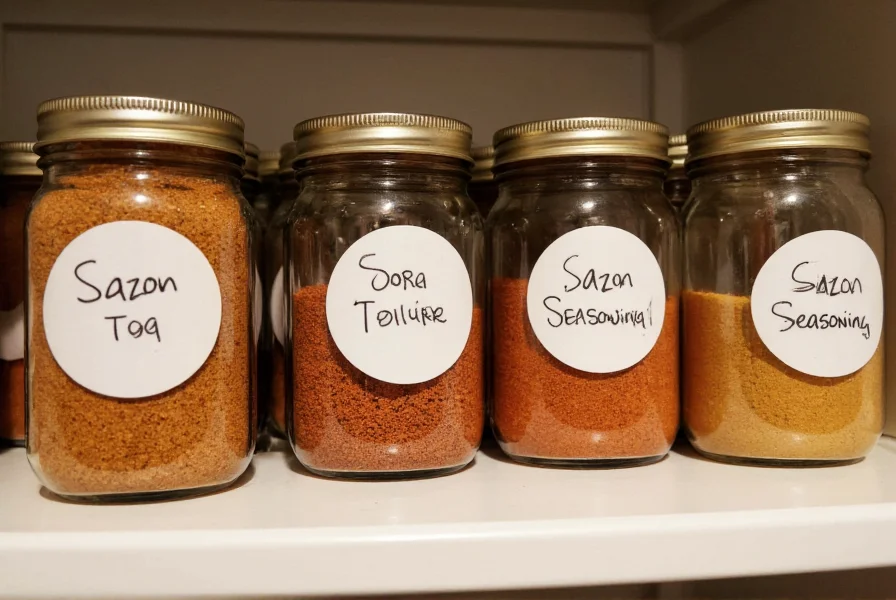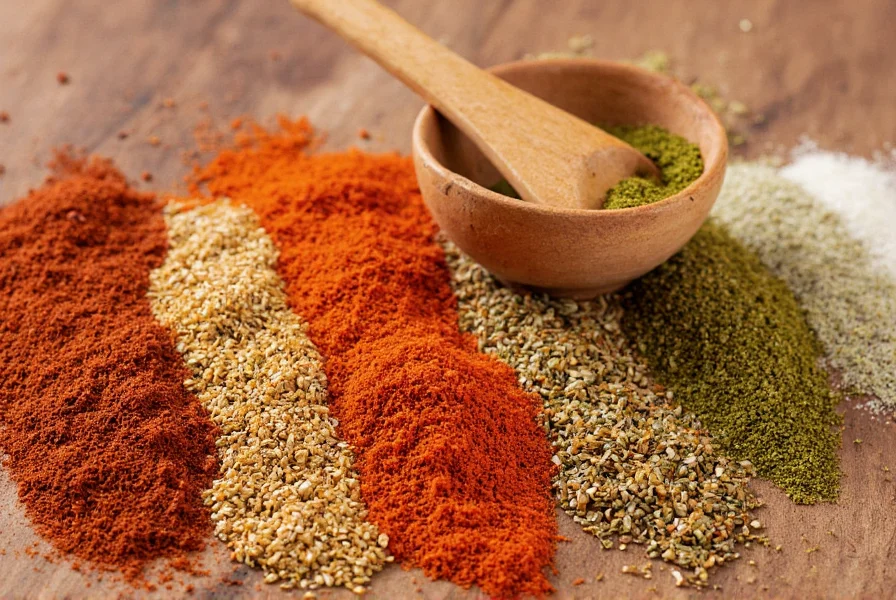Sazon seasoning represents far more than just a spice blend—it's a cultural cornerstone that brings authentic flavor to countless Latin American dishes. Understanding its components and proper usage can transform ordinary meals into vibrant culinary experiences that honor traditional cooking methods while adapting to modern kitchens.
Origins and Cultural Significance
Originating in Puerto Rico, sazon (which translates to "seasoning" or "seasonal") has become indispensable across Latin American cooking. The distinctive orange-red hue comes primarily from annatto seeds, which indigenous Taíno people used both as food coloring and for ceremonial body paint. This connection to heritage makes sazon more than just seasoning—it's a link to cultural identity that has traveled with immigrant communities throughout the Americas.
Core Ingredients Explained
Authentic sazon seasoning contains several key components that work in harmony:
| Ingredient | Flavor Contribution | Cultural Significance |
|---|---|---|
| Annatto (Achiote) | Earthy, slightly peppery with subtle citrus notes | Traditional coloring agent used by indigenous peoples |
| Coriander | Citrusy, floral notes that brighten the blend | Common in Spanish-influenced Latin American cooking |
| Cumin | Warm, earthy depth | Connects to both indigenous and Spanish culinary traditions |
| Garlic Powder | Pungent savory base note | Essential aromatic in most Latin American cooking |
| Culantro (Recao) | Stronger, more pungent than cilantro | Distinctive Puerto Rican ingredient often included |
Commercial vs. Homemade Sazon
While Goya's sazon packets dominate supermarket shelves, many home cooks prefer making their own blend to control ingredients and avoid additives. Commercial versions often contain monosodium glutamate (MSG), sodium, and anti-caking agents, while traditional homemade sazon focuses purely on spices.
Creating your own sazon seasoning allows customization based on dietary needs—such as making a gluten-free sazon seasoning by verifying all components are pure spices without fillers. The process takes just minutes and yields a more vibrant, fresher flavor profile than pre-packaged alternatives.

How to Use Sazon Seasoning Effectively
Mastering sazon usage elevates your cooking from good to authentically flavorful. Consider these professional techniques:
- For meats: Create a paste with sazon, olive oil, and vinegar before marinating proteins—this helps the spices penetrate deeply
- In rice: Add 1-2 teaspoons to the cooking water for vibrant, flavorful arroz con pollo or yellow rice
- With beans: Stir into simmering beans during the last 15 minutes of cooking for authentic habichuelas coloradas
- As finishing touch: Sprinkle lightly over finished dishes for an aromatic boost
When learning how to use sazon seasoning in recipes, remember that less is often more—its potent flavor can overwhelm delicate dishes. Start with ¼ teaspoon per serving and adjust to taste.
Sazon Substitutes and Alternatives
When authentic sazon isn't available, these alternatives maintain similar flavor profiles:
- Annatto oil + adobo: Combine annatto-infused oil with adobo seasoning for similar color and flavor
- Taco seasoning + paprika: For emergency substitutions (though flavor profile differs significantly)
- Make your own blend: 2 parts annatto powder, 1 part cumin, 1 part coriander, ½ part garlic powder, ½ part oregano
Understanding sazon vs adobo seasoning differences prevents recipe mistakes—adobo focuses on garlic and oregano without the distinctive annatto coloring, making it unsuitable as a direct replacement when color matters.
Storage and Shelf Life
To maintain optimal flavor, store sazon seasoning in an airtight container away from light and heat. Properly stored, homemade blends retain peak flavor for 6-8 months, while commercial packets typically remain potent for 12-18 months. Check for faded color or diminished aroma as indicators that your sazon seasoning has lost its vibrancy.

Common Sazon Questions Answered
Many home cooks wonder about specific aspects of using this essential seasoning. Here's what experienced Latin American chefs recommend regarding frequently asked questions about sazon usage and composition.











 浙公网安备
33010002000092号
浙公网安备
33010002000092号 浙B2-20120091-4
浙B2-20120091-4